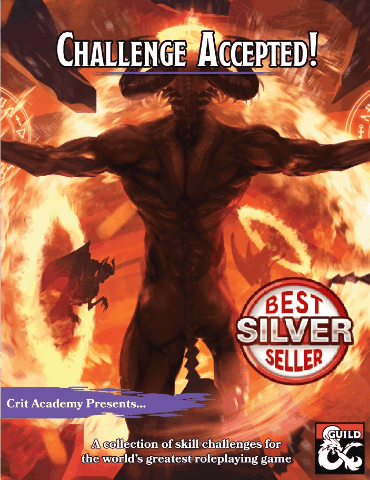The Task Oriented Dungeon Master
- Justin Handlin

- Jan 4, 2020
- 3 min read

Crit Academy discusses Task-Oriented Dungeon Mastering, a set of Dungeons and Dragons process tools, that can help keeping your story and campaigns moving forward. It all starts with setting guidelines for identifying the tasks at hand. We cover some example tasks and situations and how the DM might handle the situation.
Exploration Task:
Describe the Options
Get the players to inform you what their characters are doing.
Identify player responses
Interruption with obstacles/encounters
Advance to the next decision point
Conversation Task:
Describe scene and the NPC
Decided the goals of the NPC
Give an opening line
Roleplay conversation
End conversation
Combat Task:
Set positions
Roll Initiative
Determine surprise
Run battle
Unearthed Tips and Tricks: New and reusable D&D content for you to bring with you on your next adventure.
Character Concept:
The Drunken Master
The concept of a Drunken Master isn’t anything new - it’s an archetype for the Monk class and has existed in fiction for decades. But why stop at Monks and martial artists? Any character can be an example of a Drunken Master; all it takes is to have them act in unexpected ways, stumble around to catch opponents off guard, and make it look like their deft maneuvering is an accident. Maybe your Wizard begins to cast a spell, but he trips and falls at the last second sending a “Firebolt” directly into the opponent’s sneering face. A fighter could move to stab an enemy with his sword, but instead he slips the blade (and the hand holding it) harmlessly past the enemy’s chest to grab them in a bear hug and slam them onto the floor.
Encounter Concept:
Retrieve a Stolen Item
This encounter runs like a familiar fantasy trope, but with a little bit of a twist. The players
are hired by a down-on-their-luck merchant or noble to retrieve an important artifact or heirloom that was stolen. The players investigate and track down the thieves. When they’re
apprehended, however, the thieves insist that they bought the heirloom fair and square or
that it was theirs to begin with; they might even have the documentation to prove it.
Instead of a simple and clear goal - retrieve stolen goods - they are forced to investigate
further, or pick which side they believe in. Either the artifact was stolen and the thieves
were able to falsify documents to back up their claim, or the merchant or noble was attempting to trick some unwitting heroes into stealing some new wares for him under a pretense of rightful ownership. After all, they can’t both be telling the truth, can they?
Magic Item:
Spool of Infinite Rope
Wondrous item, Rare
This spool magically dispenses exactly the right amount of rope when you need it. As long as
the rope is connected to the spool, there is no limit to how long of a rope can be unspooled
from it, and the spool’s size will never decrease. However, if the rope is ever cut any unspooled rope will disintegrate after 24 hours.
DM Tip:
Fighting Smart and Dumb
Your NPCs and monsters don’t simply have to be a pile of hit points and melee damage. Look at the enemies’ intelligence scores - are they smart? Stupid? A smart foe is as deadly as they are prepared, so have your high-intelligence monsters set traps, coordinate attacks, train minions, and so on. They might prepare protections against the players’ most common
spells and attacks, or lure them into traps using treasures they know the players are looking for.
Don’t forget the stupid enemies either! They can have just as much depth as intelligent
enemies. A low-intelligence monster might not fight until death and instead choose to flee.
Conversely, they might not realize escape is an option, so they might keep fighting until
their dying breath!
Player Tip: Don't be a Dick!
Take the Hooks the DM Gives You
You came to the gaming table to go on an adventure. When
the DM gives you a hook for an adventure, instead of thinking, “Would my character
want to go on this adventure?” you should be asking, “Why does my character want to go on this adventure?” Whether or not you’re going to go adventuring shouldn’t be in question.
Instead, you should use the adventure to flesh out your character, and come up with a reason why you would be interested if one doesn’t arise. If you can’t think of a reason why your character would go on an adventure, then make a new character that would go on the adventure. Leave your old character behind to be an NPC.
We hope you enjoyed your experience here on Crit Academy, if you did, please consider sharing our show and leaving a review here on itunes.
Support Us:
Subscribe to our Blog and be entered to win phat lootz every week.
Visit our website at www.critacademy.com or become a patron donor and get additional phat loot!















Comments